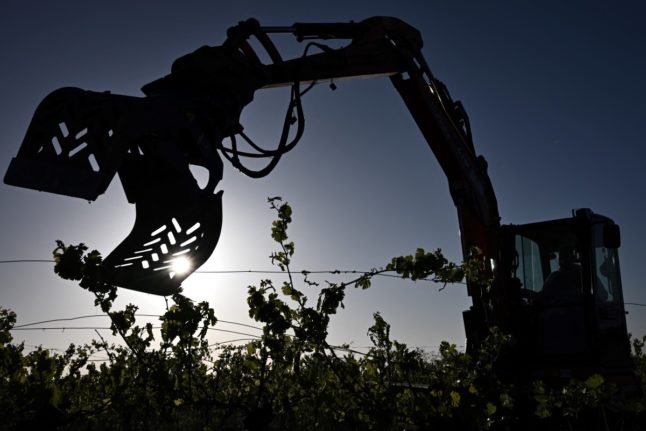And not a day goes by without Jacques and Marie-Jeanne Fournier going to check the source only a few paces from their door.
“I go there at least three times a day. It’s part of me,” 74-year-old Marie-Jeanne told AFP.
Her parents were once the guardians of the source, and now that unofficial mantle has fallen on her and husband Jacques.
Barely 60 souls live in the village of Source-Seine in the wooded hills north of Dijon.
By the time the tiny stream has reached the French capital 300 kilometres away it has become a mighty river 200 metres wide.
But some mornings barely a few damp traces are visible at the source beneath the swirling dragonflies. If you scratch about a bit in the grass, however, a small stream quickly forms.
The source — one of two spots where the river officially starts — bubbles up through the remains of an ancient Gallo-Roman temple built about 2,000 years ago, said Jacques Fournier, 73.
Celtic goddess
But you could easily miss this small out-of-the-way valley. There are few signs to direct tourists to the statue of the goddess Sequana, the Celtic deity who gave her name to the river.
In the mid-19th century Napoleon III had a grotto and cave built “where the source was captured to honour the city of Paris and Sequana,” said Marie-Jeanne Fournier.
Her parents moved into a house next to the grotto and its reclining nymph in the early 1950s when she was four years old.
Her father Paul Lamarche was later appointed its caretaker and would regularly welcome visitors. A small stone bridge over the Seine while it is still a stream is named after him.
“Like most children in the village in the 1960s,” Fournier learned to swim in a natural pool in the river just downstream from her home.
“It was part of my identity,” said Fournier, who has lived all her life close to rivers. She retired back to Source-Seine to run a guesthouse because “the Seine is a part of my parents’ legacy”.
The Olympic flame is due to be carried past the site on July 12th on its way to Paris.
The couple will be there to greet it, but as members of the Sources of the Seine Association, they are worried how long the river will continue to rise near their home.
Every year the grotto has become drier and drier as climate change hits the region, where some of France’s finest Burgundy wines are produced.
“My fear is that the (historic) source of the Seine will disappear,” said Marie-Jeanne Fournier. “Perhaps the source will be further downstream in a few years.”



 Please whitelist us to continue reading.
Please whitelist us to continue reading.
Member comments